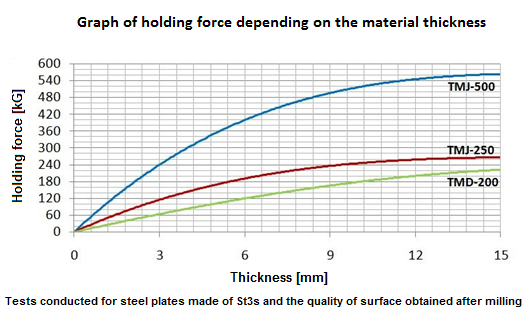



TMJ series one-sided permanent magnetic vises have a wide range of applications in grinding, cutting, drilling and milling operations both on conventional and CNC machine tools. The vise is built on the basis of durable neodymium magnets. It does not require any electrical power supply, so it is completely safe for a user.
The body of the chuck is made from a uniform steel block with two pole pieces screwed to it. Additionally, eccentric packing plates are mounted on pole pieces for better clamping of a workpiece in the horizontal plane at high machining forces. The magnetic field can be turned on and off with the use of a box wrench by turning it by 180° to the right or to the left respectively.
Universal one-sided magnetic vises are designed for clamping ferromagnetic workpieces (i.e. iron, structural steel, alloy steel, cast iron). The rigidity of the vise and the power of neodymium magnets allow clamping heavy workpieces, while the small dimensions allow machining a workpiece from five sides in a single clamping position. TMJ series vises are resistant to the action of water and coolants with pH > 8.7.
Pivots of the magnetic roller available on both sides allow combining two or more vises into one set, thanks to which it is possible to clamp long workpieces.

Parameters that affect the clamping force:

Schematic diagram and dimensions of available TMJ chucks are presented below:
| Type of the chuck | Dimensions [mm] | Weight [kg] | ||||||
| A | B | L | W | H | C | D | ||
| TMJ-250 | 102 | 106 | 142 | 128 | 65 | 55 | 115 | 4,7 |
| TMJ-500 | 110 | 150 | 200 | 150 | 76 | - | - | 9,3 |